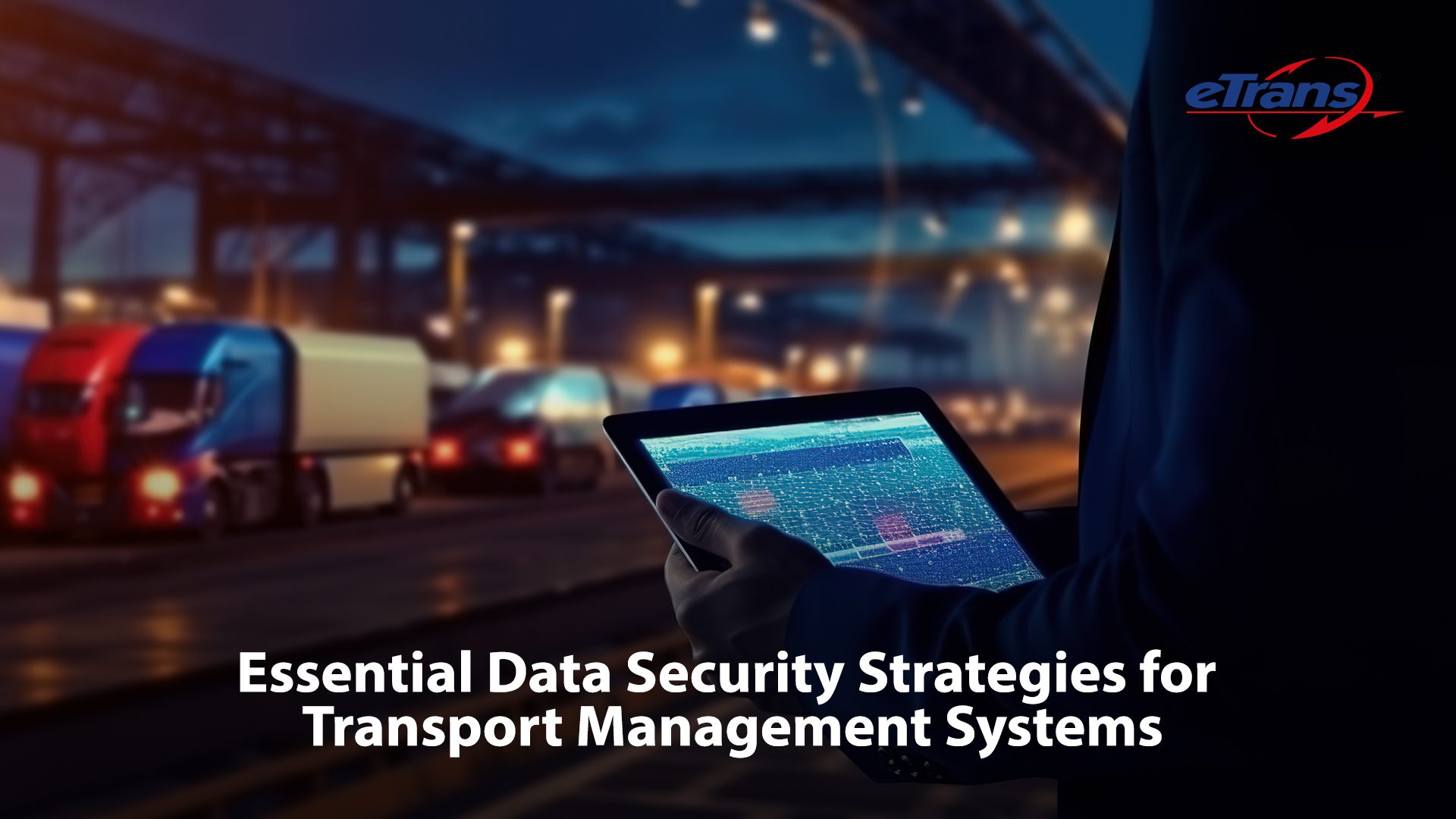Managing a fleet is challenging enough without the added headache of cyber threats. Imagine running a tight transport management system (TMS) only to have hackers breach your network, leak sensitive data, or worse—shut down operations entirely. Scary, right? With modern fleet management software and logistics management solutions handling vast amounts of data, ensuring security isn’t optional; it’s mission-critical.
A weak security posture leaves vehicle tracking systems, freight management solutions, and real-time shipment tracking vulnerable to cybercriminals. Data breaches in supply chain optimization can disrupt deliveries, impact financial records, and erode customer trust. Businesses using route planning software or fleet telematics must prioritize cybersecurity to safeguard operational integrity.
In this article, we’ll break down essential data security strategies that protect transport management systems, ensuring your fleet fuel management, driver behaviour monitoring, and cargo tracking solutions operate seamlessly and securely. Plus, we’ll highlight how eTrans Solutions, a leader in compliance management in transportation, offers robust security for modern fleets.
1. Understanding Data Security in Transport Management Systems
A transport management system (TMS) is the backbone of modern fleet operations. It optimizes transportation workflow automation, monitors fleet performance analytics, and enhances overall efficiency. But as reliance on digital platforms grows, so do the risks.
Businesses that neglect cybersecurity expose themselves to financial loss, legal liabilities, and damaged reputations. In addition, the lack of ample data security can lead to compromising the safety and security of cargo in transit, as well as the driver. This translates to hijacking of vehicles, and in some cases, the lives of the drivers are jeopardized!
With cyber threats evolving daily, securing vehicle tracking systems against unauthorized access and breaches should be a top priority.
2. Common Cyber Threats to TMS
Cybercriminals constantly target logistics management solutions because they store vast amounts of fleet and operational data. Here are some common threats:
– Ransomware Attacks: Hackers encrypt TMS data, demanding payment for decryption keys.
– Data Breaches: Unauthorized access exposes critical business and customer data.
– Phishing Attacks: Employees unknowingly click on malicious links, compromising system security.
– Unauthorized Access: Weak passwords or unprotected APIs allow hackers to manipulate cargo tracking solutions and fleet fuel management platforms.
A real-world example? A cyberattack on Microlise affected Serco and DHL’s tracking devices, highlighting vulnerabilities in transportation workflow automation. This incident proves that no business is immune to digital threats.
3. Implementing Robust Access Controls
You wouldn’t leave your fleet unlocked overnight—so why leave your transport management system unprotected? Implementing multi-factor authentication (MFA) and role-based access control (RBAC) ensures only authorized personnel can access sensitive data.
– MFA: Requires an additional verification step beyond passwords.
– RBAC: Assigns access based on job responsibilities, reducing exposure to unauthorized users.
4. Securing Communication Channels
With data constantly flowing between vehicle tracking systems and cloud servers, encrypted communication is crucial. Businesses should:
– Utilize Virtual Private Networks (VPNs) for remote access.
– Implement end-to-end encryption for real-time shipment tracking.
– Secure APIs to prevent unauthorized third-party data access.
5. Regular System Updates and Patch Management
Ignoring software updates is like ignoring a flat tire—it only makes things worse. Keeping fleet telematics and route planning software up-to-date ensures protection against known vulnerabilities.
– Set up automatic updates for fleet management software.
– Conduct routine vulnerability scans to detect security gaps.
– Apply patches promptly to prevent exploitation by cybercriminals.
6. Employee Training and Awareness
The first line of defence against online attacks is your workforce. A single careless click can jeopardize an entire freight management solution. Regular training on:
– Recognizing phishing attempts.
– Creating strong passwords for compliance management in transportation.
– Following security protocols in supply chain optimization.
7. Data Backup and Disaster Recovery Planning
Accidents happen. Cyber-attacks, natural disasters, or system failures can cripple operations. Having a robust disaster recovery plan ensures the quick restoration of logistics management solutions.
– Schedule frequent backups for real-time shipment tracking data.
– Store backups both on-site and in secure cloud storage.
– Test disaster recovery procedures regularly.
8. Monitoring and Incident Response
Constant vigilance is key. A strong incident response plan and driver behaviour monitoring identify and mitigate threats before they escalate. Businesses should:
– Monitor fleet performance analytics for unusual activity.
– Set up alerts for unauthorized access to cargo tracking solutions.
– Have a dedicated team to handle security breaches swiftly.
9. Compliance with Industry Standards and Regulations
Regulatory compliance isn’t just a checkbox—it’s a necessity. Adhering to compliance management in transportation ensures data protection and operational transparency.
– Follow AIS 140 standards for vehicle tracking systems in India.
– Align with GDPR and other data privacy laws.
– Implement data logging for fleet fuel management and tracking activities.
10. Case Studies of Data Security Breaches in TMS
Cyberattacks are not theoretical—they happen. The transport for London cyber-attack disrupted public transportation, showing the importance of cybersecurity in fleet telematics. Learning from such incidents helps businesses fortify their defences.
11. Conclusion & Best Practices
Data security in transport management systems isn’t optional—it’s essential. From securing communication channels to compliance management in transportation, businesses must take proactive measures.
The Best Practices Recap:
– Implement MFA and RBAC for secure access.
– Encrypt data transmissions for real-time shipment tracking.
– Keep fleet management software updated.
– Train employees on cybersecurity awareness.
– Regularly back up cargo tracking solutions.
– Monitor fleet performance analytics for anomalies.
– Stay compliant with industry regulations.
For businesses serious about securing their logistics management solutions, eTrans Solutions offers top-tier fleet telematics with built-in security features. Protect your operations, safeguard your data, and stay ahead of evolving cyber threats.
Frequently Asked Questions
1. Why is data security important in transport management systems?
A secure TMS protects sensitive fleet data, prevents cyber threats, and ensures smooth logistics operations.
2. What is the biggest cyber threat to transport management systems?
Ransomware attacks are a major concern, where hackers lock system data and demand payment for restoration.
3. How can businesses secure communication in fleet tracking systems?
Using VPNs, encryption, and secure APIs can prevent unauthorized access and data breaches.
4. How often should businesses update their TMS software?
Regular updates, at least quarterly, ensure protection against newly discovered vulnerabilities.
5. Why choose eTrans Solutions for secure transport management?
eTrans Solutions offers advanced fleet management software with built-in encryption, compliance tools, and real-time monitoring for total security.



